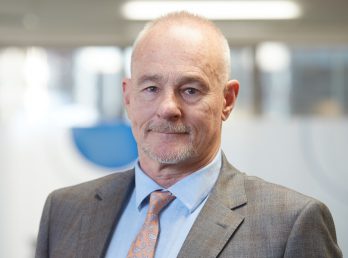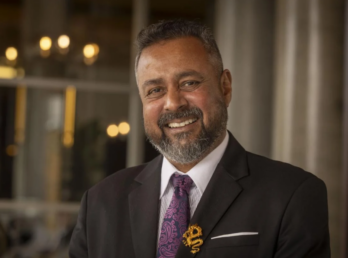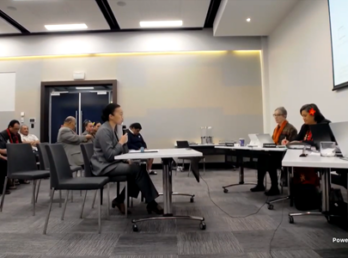Patricia’s Journey: Assisted Dying in New Zealand articles
Date
3 Dec 2022
Related Expertise
In early February 2022, Patricia (not her real name but my goodness she was a real person with genuine presence – wife, mother, grandmother, friend, client, countrywoman, gardener, artist – a woman of immense elegance, kindness, and courage) had some unusual and noticeable bodily spasms.
By late September 2022 Patricia’s life was ended as she wished under the provisions of section 20 of the End-of-Life Choice Act 2019 (the Act). This was my first exposure to the Act and the decision made by Patricia knowing she had a terminal and irreversible health condition ( an inoperable and highly aggressive illness that early intervention could not slow or halt) was made solely by her but with the love and support of her family and whanau.
This was the right journey for Patricia. It was always her journey, and she had the courage and support of those nearest and dearest to her on this journey. It may not be for everybody but those “every bodies” have no layperson say in her journey nor should they, according to Patricia.
Her decision was made in an informed and unpressured manner. Patricia was medically assessed as being competent to make an informed choice about assisted dying. This means that she was able to understand, retain, use and weigh relevant information about assisted dying, and was able to communicate clearly and concisely her request.
The Legal Framework
What is Assisted Dying?
Section 2 of the Act defines assisted dying as; “assisted dying”, in relation to a person, means:
- the administration by an attending medical practitioner or an attending nurse practitioner of medication to the person to relieve the person’s suffering by hastening death; or
- the self-administration by the person of medication to relieve their suffering by hastening death.
There are strict eligibility criteria for assisted dying. Not everyone with a terminal illness will be eligible for assisted dying. The Act states that to be eligible, the person must be:
- aged 18 years or over;
- a citizen or permanent resident of New Zealand;
- suffering from a terminal illness that is likely to end their life within six months;
- in an advanced state of irreversible decline in physical capability;
- experiencing unbearable suffering that cannot be relieved in a manner that the person considers tolerable;
- competent to make an informed decision about assisted dying.
Each person’s illness or condition is determined on a case-by-case basis to determine whether the illness or condition meets the eligibility criteria. Every person’s clinical situation is different. The person’s medical practitioner will assess if the person meets the eligibility criteria in the first instance.
Competency The person wishing to end their life must always be mentally competent. This applies both to the time of making the initial request for assisted dying as well as at the time of the assisted death. If the person is found eligible for assisted dying but then loses competency, they cannot have an assisted death.
Advance directives and powers of attorney CANNOT be used for assisted dying in New Zealand. An advance directive is a statement setting out what treatment the person wants, or does not want, to receive in the future. It is only the person seeking assisted death who is able to make the application to commence the process, as detailed in section 11.
Conscientious objection A health practitioner is not under any obligation to assist any person who wishes to exercise the option of receiving assisted dying under this Act if the health practitioner has a conscientious objection to providing that assistance to the person

Step 1: Make the Request
Section 11 of the Act sets out the request steps:
- A person who wishes to exercise the option of receiving assisted dying must inform the attending medical practitioner of their wish.
- The attending medical practitioner must-
- give the person the following information:
- the prognosis for the person’s terminal illness; and
- the irreversible nature of assisted dying; and
- the anticipated impacts of assisted dying; and
- personally communicate by any means (for example, by telephone or electronic communication) with the person about the person’s wish at intervals determined by the progress of the person’s terminal illness; and
- ensure that the person understands their other options for end-of-life care; and
- ensure that the person knows that they can decide at any time before the administration of the medication not to receive the medication; and
- encourage the person to discuss their wish with others such as family, friends, and counsellors; and
- ensure that the person knows that they are not obliged to discuss their wish with anyone; and
- ensure that the person has had the opportunity to discuss their wish with those whom they choose; and
- do their best to ensure that the person expresses their wish free from pressure from any other person by-
- conferring with other health practitioners who are in regular contact with the person; and
(ii) conferring with members of the person’s family approved by the person; and
(i) record the actions they have taken to comply with paragraph (a) to (h) in the first part of the approved form that requests the option of receiving assisted dying.
A doctor (known as the attending medical practitioner) will support the person throughout the assisted dying process. The attending medical practitioner will lead the assessment process, and if the person is eligible, they can help the person and their whanau with planning for the assisted death and can also administer the medication.
Sometimes the person’s attending medical practitioner will be their current doctor, such as their general practitioner or specialist. However, not all doctors will provide assisted dying services. This may be due to personal beliefs (conscientious objection), or because they do not have the appropriate skills or experience.
If a person’s doctor does not provide assisted dying services, the doctor should:
- explain why they do not provide the service
- connect the person with a doctor who can be their attending medical practitioner, or tell the person that they can ask the Support and Consultation for End of Life in New Zealand Group (SCENZ Group) for the name and contact details of a medical practitioner who is willing to provide assisted dying services.
Step 2: Request Confirmed
If the request is approved the provisions of section 12 of the Act apply:
Section 12 Request confirmed
- This section applies after the attending medical practitioner complies with section 11.
- If the person requesting to exercise the option of receiving assisted dying (A) wishes to proceed, the attending medical practitioner must give A the approved form referred to in section 11(2)(i).
- A must-
- sign and date the second part of the form; or
- be present when the second part of the form is signed and dated as described in subsection (4).
- The second part of the form may be signed and dated by another person (B) if-
- A cannot write for any reason; and
- A requests B to sign and date it; and
- B notes on the form that they signed the second part of the form in the presence of A; and
- B confirms on the form that B is not-
- a health practitioner caring for A; or
- a person who knows that they stand to benefit from the death of A;
or
- a person aged under 18 years; or a person with a mental incapacity.
- The attending medical practitioner must-
- be present when-
- subsection (3)(a) is complied with; or
- subsections (3)(b) and (4) are complied with; and
- collect the form; and
- send the completed form to the Registrar (assisted dying).
- be present when-
If the attending medical practitioner considers that the person is eligible, a second independent doctor (known as the independent medical practitioner) will then assess the person. If one or both of these doctors thinks that the person might not be competent to make a decision, a psychiatrist may carry out a third assessment.
The independent medical practitioner and psychiatrist, if required, will be from the practitioner lists held by the SCENZ Group.
The attending medical practitioner must ask the SCENZ Group for the name and contact details of an independent medical practitioner and ask the independent medical practitioner for their opinion on whether the person requesting the option of receiving assisted dying is a person who is eligible for assisted dying.
The independent medical practitioner must read the person’s medical files, examine the person, and must reach the opinion that the person requesting the option of receiving assisted dying is or is not a person who is eligible for assisted dying. The Independent practitioner must complete an approved form recording their opinion; and send copies to the Registrar (assisted dying) and the attending medical practitioner.
If the first and second opinions do not agree then a third opinion is to be given by a psychiatrist if competence is not established to the satisfaction of 1 or both medical practitioners under section 15 of the Act.
Step 3: Set Date and Time for Assisted Death
Once the request is approved the attending medical practitioner advises the outcome and discusses with the person the progress of the person’s terminal illness, discuss with the person the likely timing for the administration of the medication and give the person an approved form for the person to complete by choosing the date and time for the administration of the medication. The eligible person then must complete an approved form and return the completed form to the attending medical practitioner. After receiving the completed form, the attending medical practitioner must send the form to the Registrar (assisted dying). The Registrar (assisted dying) is a statutory officer appointed under the Act.
Pursuant to section 19 of the Act before the date chosen by an eligible person for the administration of the medication, the attending medical practitioner must advise the person about the following methods for the administration of the medication:
- ingestion, triggered by the person;
- intravenous delivery, triggered by the person;
- ingestion through a tube, triggered by the attending medical practitioner or an attending nurse practitioner; or
- injection administered by the attending medical practitioner or an attending nurse practitioner;
and ask the person to choose one of the methods; and ensure that the person knows that they can decide, at any time before the administration of the medication, not to receive the medication or to receive the medication at a time on a later date that is not more than 6 months after the date initially chosen for the administration of the medication by the person.
Provisional arrangements for the administration of the medication on the chosen day and time. At least 48 hours before the chosen time for the administration of the medication, the attending medical practitioner must write the appropriate prescription for the eligible person; and advise the Registrar of the method and of the date and time chosen for the administration of the medication.

Step 4: Administration of Medication
At the chosen time for the administration of the medication, the attending medical practitioner must ask the eligible person if they choose to receive the medication at that time; or delay the medication or rescind their request entirely. If the eligible person chooses to receive the medication, the attending medical practitioner must provide the medication to the person, for administration by either of the methods described in section 19 of the Act. The medical practitioner must be in the same room or area as the person; or in close proximity to the person.
Following the death by assisted dying the medical practitioner must report the death to the Registrar (assisted dying) within 14 days of the date of death.
As at 30th September 2022, 214 persons in New Zealand have ended their lives under the provisions of the Act and 81% have died in their home or in a private residence.
Patricia had perhaps a month to live. Her health had declined markedly, and she was virtually bedridden. She was at peace with her life and stated there was little more she wanted in her life – her bucket list was mostly satisfied. “I have had a good life” she would say. This process was observable as being exactly what this proud lady wanted. She said goodbye on her terms and in her time to her beloved family and whanau. In many ways it was as if she was present and orchestrating her own life commemoration before her time and in some respects that may have helped the family deal with the grief of her early passing. As stated, before it is not for all, but it was exactly right for Patricia in the situation she was in.
Patricia was blessed to die in her own home in the company of her husband and doctor upon her own terms and wishes. Her family were at home with her, and she enjoyed until the very end the beauty of her garden, her family and with her dignity intact. Rest in peace.
Subscribe
Get insights sent direct to your email.





















